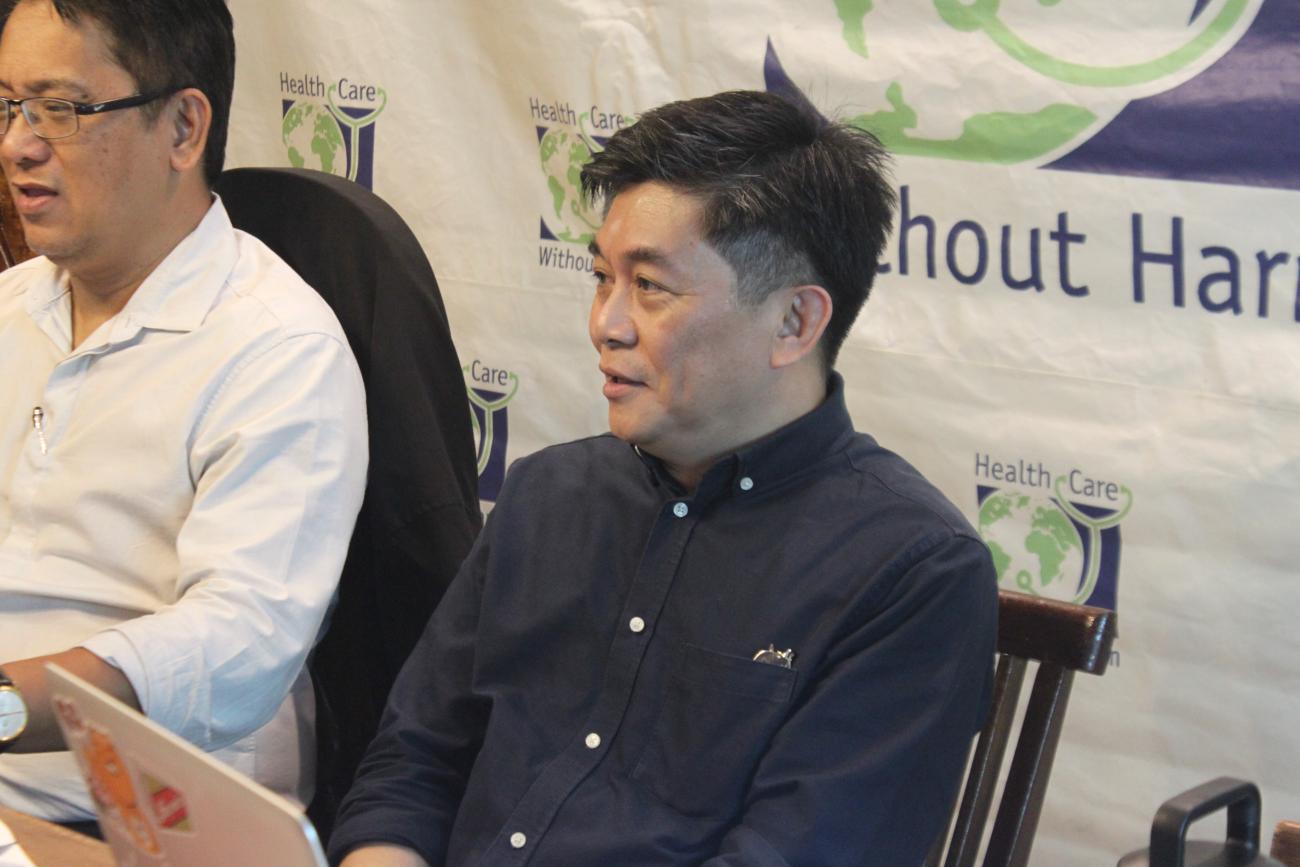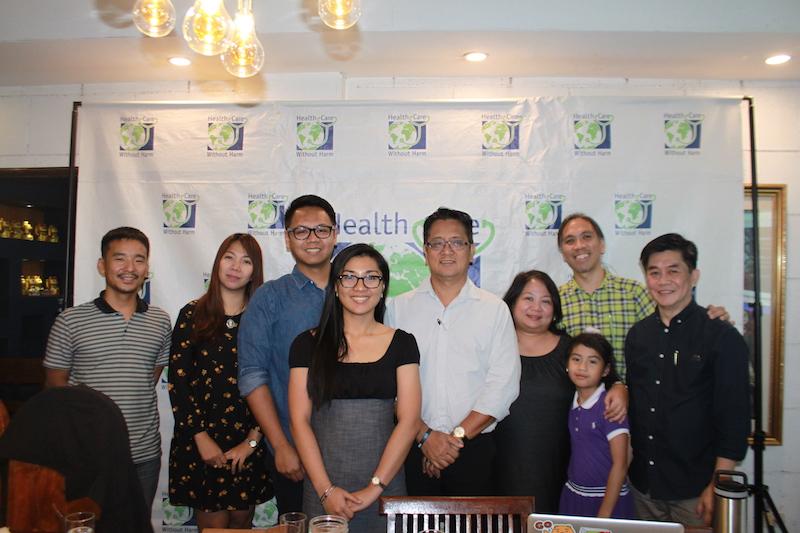Clean air is a basic requirement not just for maintaining a healthy planet but also human health and well-being. Therefore, unpolluted air is a human right.
LAST THURSDAY -- In an aim to consult and consolidate the healthcare sector's leadership on the worsening impacts of air pollution on human health, doctors, writers, medical and public health students including representatives from World Health Organization Philippines, Greenpeace Philippines and Clean Air Asia gathered for a Round Table Discussion on Air Pollution and its Health Risks led by the Healthy Energy Initiative (HEI) program of HCWH Asia in Quezon City, Philippines.
As a background, PM is a common proxy indicator for air pollution. It affects more people than any other pollutant. The major components of PM are sulfate, nitrates, ammonia, sodium chloride, black carbon, mineral dust and water. It consists of a complex mixture of solid and liquid particles of organic and inorganic substances suspended in the air. While particles with a diameter of 10 microns or less, (≤ PM10) can penetrate and lodge deep inside the lungs, the even more health-damaging particles are those with a diameter of 2.5 microns or less, (≤ PM2.5). PM2.5 can penetrate the lung barrier and enter the blood system. Chronic exposure to particles contributes to the risk of developing cardiovascular and respiratory diseases, as well as of lung cancer.
Air quality measurements are typically reported in terms of daily or annual mean concentrations of PM10 particles per cubic meter of air volume (m3). Routine air quality measurements typically describe such PM concentrations in terms of micrograms per cubic meter (μg/m3). When sufficiently sensitive measurement tools are available, concentrations of fine particles (PM2.5 or smaller), are also reported.*
"The outdoor air quality standards of the Philippines for PM 10 and PM 2.5 is still below the health-based WHO guidelines, while indoor air quality has no standards, no effective program, and is still a major problem that affects population’s health", according to Engr. Bonifacio Magtibay of WHO Philippines.
In addition, Engr. Magtibay mentioned that most recently, "air pollution is now causing 120,000 deaths every year in the country alone which is an alarming rate and should be addressed immediately."
Dr. Roger Dazo of the Philippine Medical Association on the other hand, expressed his worry that if the air pollution problem in the Philippines is not addressed soon, then we might see bottled oxygen and the likes in the near future.
The recently published WHO Study on Air Pollution was also discussed during the gathering and it stated some very distressful facts:
Worldwide ambient air pollution accounts for:
* 25% of all deaths and disease from lung cancer
* 17% of all deaths and disease from acute lower respiratory infection
* 16% of all deaths from stroke
* 15% of all deaths and disease from ischaemic heart disease
* 8% of all deaths and disease from chronic obstructive pulmonary disease
At that, our health care sector are resolved more than ever to engage in the alleviation of air quality campaign in the Philippines, especially in recognizing that they are in the position to inspire leadership of our government agencies and other civil society organizations who have the capacity to combat air pollution from the ground up, including documentation systems that will benefit data-gathering on its health impacts.
Photo from google.com
Paeng Lopez, Healthy Energy Initiative Campaigner of Health Care Without Harm Asia
HCWH Asia's partner organizations such as Greenepeace Philippines, Clean Air Asia and Students from Ateneo School of Medicine and Public Health (ASMPH) and #ChooseHealthyEnergy campaign Ambassadors also took part in the initiative by sharing their organization's ongoing efforts to combat air pollution in the Philippines and in other regions in Asia.
Precious Benjamin from Clean Air Asia
Khevin Yu from Greenpeace Philippines
Via Roderos and Dex Galban from Ateneo School of Medicine and Public Health
Dr. Stef dela Cruz, #ChooseHealthyEnergy Ambassador and writer
For these reasons, through the Healthy Energy Initiative program of HCWH Asia and its prominent Board of Trustees including former health secretary, Dr. Esperanza Cabral, Dr. Gina Nazareth and Dr. Michelle Segarra, the health care sector alliance for the Philippines is being realized through these series of gatherings and discussions.
"The very vision of this activity is to establish a network of health professionals, students and even health workers to become leaders on the air quality alleviation campaign in the country. Furthermore, to express commitment in helping the Philippine Department of Environment and Natural Resources (DENR) and Department of Health (DOH) on their own air quality efforts." said Paeng Lopez of the Healthy Energy Initiative.
In light of the upcoming World Environment Day on June 5, 2018 the network will draft a Statement of Commitment which is signed by all members of the network and to be submitted to the office of the DENR Secretary, Roy Cimatu.###
To know more about our Air Quality Alleviation campaign, please visit our Social Media accounts found in the upper right of this page or send an email to info@no-harm.org
And join the online conversation, #IamForCleanerAir | #IamForAhealthyFuture










